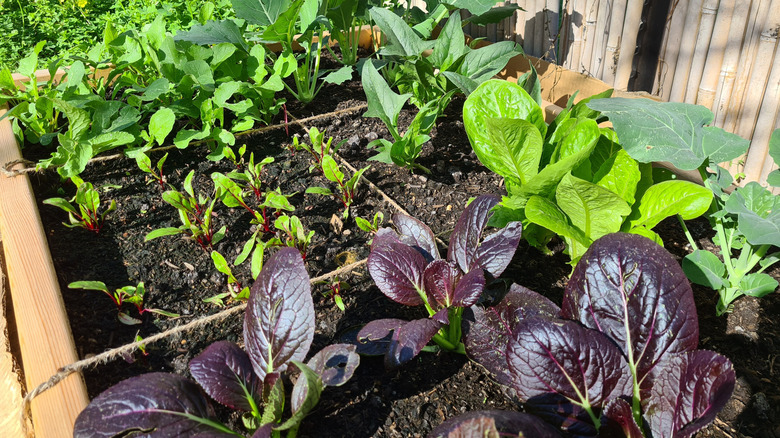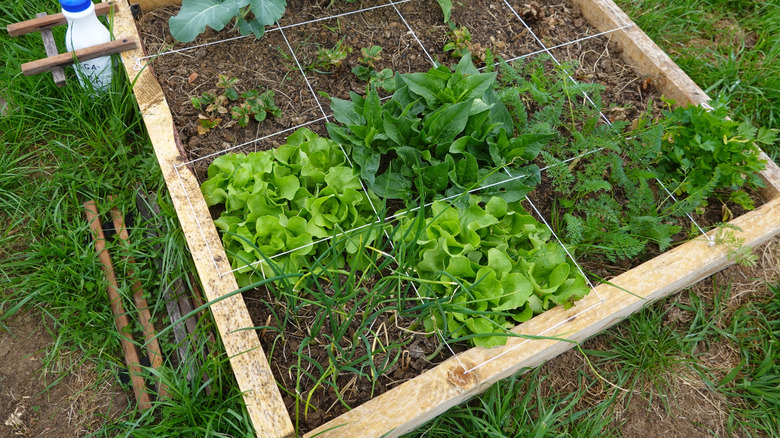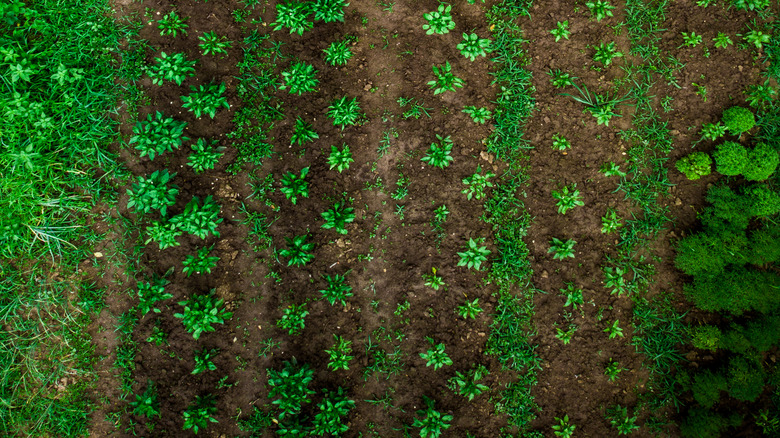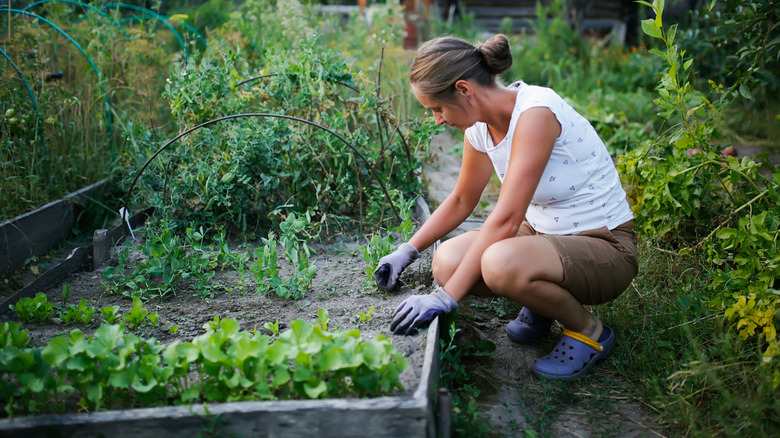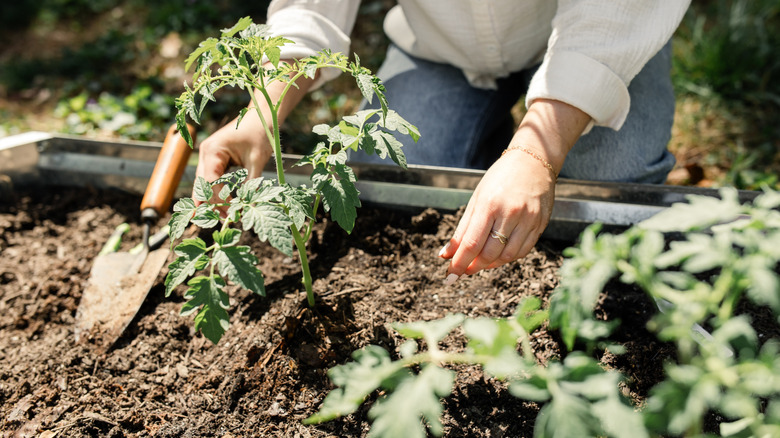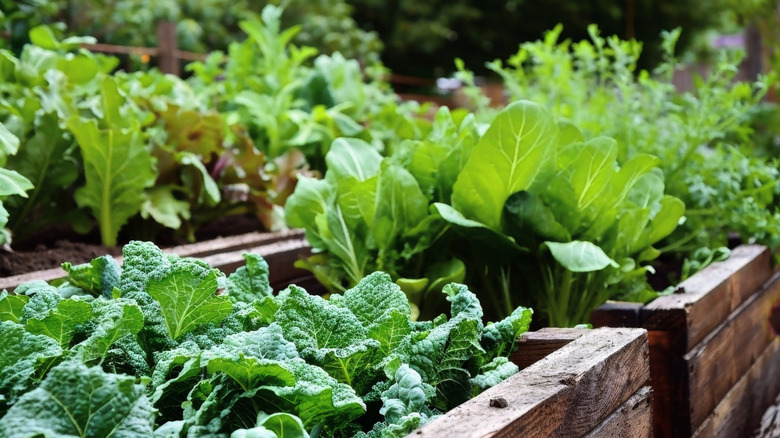What Is Square Foot Gardening And Tips For Getting Started
We may receive a commission on purchases made from links.
There are several different gardening methods to choose from, and as a beginner, it can be hard to determine which ones will benefit you the most. Vertical, container, row, raised beds, hydroponics, bale, and aquaponics are just a few of the different options.
No one method is completely more ideal than another. It depends on your gardening skills, your yard space, your soil quality, and what other practices you're trying out around the home. However, one of the most commonly brought up and used is square foot gardening. It works well for many gardeners, especially in the current age where a lot of people, like those in urban areas, don't always have the space they need to create a full garden.
Square foot gardening does come with a lot of benefits, including saving space and making the most of the area you have. Despite these numerous pros, there are some downsides, which means it isn't the ideal option for everyone. If you are considering starting square foot gardening, make sure you fully understand who benefits from it the most.
What is square foot gardening?
Square foot gardening is a method that takes advantage of limited space. It was first introduced to the world in the 1980s by Mel Bartholomew after he tested the method himself for several years. Though it sounds daunting, as it involves some math, it's mostly just a way to make the most out of your space to grow a large number of plants, no matter the overall size of your gardening bed. In fact, it was originally dismissed because of its simplicity.
In layman's terms, you just take your space and divide it into 1-foot by 1-foot squares. For ease (and to make it obvious where those squares are), a grid made from wood or string is often placed on top of the bed. Once you do that, you determine which plants you need and how much space they take up. Depending on what you choose, it's possible to grow somewhere between one and 16 plants in each grid.
While not every plant works with the square foot gardening method, many popular fruits, vegetables, and flowers make it a practical option for first-time gardeners. For example, squash, peppers, cabbage, tomatoes, cucumbers, marigolds, strawberries, basil, peas, spinach, radishes, carrots, and green onions are just some examples of the plants you can grow while following this method.
Why use the square foot gardening method?
There are many benefits to the square foot gardening method. Compared to row gardening, it's said to be cost-effective, requires less work, and even uses less water. The other benefit is how well this method works in limited spaces, and can potentially give you the same amount of produce as row gardening but in a 20% smaller space.
Not only does it let you get more plants for less room, but the shape of your garden is flexible. For row gardening, you need long stretches of space for straight lines. However, for this method, anywhere you have an extra square foot to spare, you can put a garden bed. You can make your raised beds square, rectangle, L-shaped, or any other shape so they fit in your available yard.
Square foot gardening works well for those who want plants that traditionally grow easily alongside each other. For example, if you want to plant fennel, you may not find that the square foot gardening method is the one you're looking for, as fennel doesn't often mesh well with other plants. This gardening method is primarily used for fruits and vegetables, but it can also do quite well for those who need to grow companion plants to protect their produce from pests.
Who may not benefit from square foot gardening
Most of the negatives for square foot gardening are the same as for raised beds. They are a bit expensive and require more maintenance than just planting in the ground. However, compared to other raised beds, square foot gardening does require less care as the plants are usually packed into their space so tight, they don't leave room for weeds to grow. You have to build (or buy) the frames and fill them with healthy dirt. These beds also need watering more often as they dry out faster than in-soil methods.
Another downside is that this method is a lot more work to set up and plan for, especially for first-time gardeners. Not only do you have to understand the basics of gardening, such as the best time to plant fruits and vegetables like tomatoes in your garden, but you have to understand what plants work well when grown together, how many of each plant should be placed in one square-foot space, and which plants do and don't work with this method.
Though it is beginner-friendly, for people already nervous about gardening for the first time, this may be too overwhelming of a process. It might be better to start by spending a year testing out your garden and using fuss-free plants for gardening beginners.
Steps for getting started with square foot gardening
Getting started with square foot gardening is easy, once you know the basics. You'll want to start by deciding where to place your garden and your beds. While it's pretty easy to make your own raised beds with wood, nails, landscape fabric, and soil, you can also buy them online or in a store.
After the beds are built, it's a good idea to start planning. Consider the plants you want to grow. Think about a mix of fruits and vegetables and maybe a few pest-resistant flowers and herbs. Make sure you pick ones that grow in the environment you placed them in, such as full sun or partial shade.
Also consider plants that grow well in your USDA zone, and the time of year. Once you have it all planned, you can do research to see how many of each plant can go in a square foot. Some plants, like carrots, do fine when 16 are planted in the same part of the grid. However, others need more room, such as cucumbers, which can only hold two per space. You also want to think about the ones that grow well together. If two plants don't do well next to each other, you can still place them in your garden, but you may want to have them in different beds, or as far apart as possible.
Square foot gardening tips and tricks
In Bartholomew's book, he mentions making 6-inch beds. For those planting on top of other soil, this is fine. However, if you're setting the beds on hard material like clay or cement, then it may be better to go with 12-inch ones. This will ensure the plants have enough to spread out. If you are using vegetables with deep roots, like squash, cucumbers, and tomatoes, then you may want to even go for 18 inches. Additionally, make sure you understand the basics of gardening before you start the square foot method. Otherwise, it's easy enough to mess up the whole project. If you want to make sure your square foot gardening works as well as possible, ensure you avoid the mistakes beginning gardeners often make.
If you have a hard time imagining the distance between your plants, or you don't want to use ropes to each square foot, there are handy tools called seeding squares that are the perfect size, and they highlight holes to mark where you'd put seeds based on how many plants you're putting in the area. They can get rid of a lot of the stress and planning from the actual planting process and ensure you place everything where it goes.
The last note is to always remember to label your beds. While it's necessary in pretty much any garden bed, it's especially important in square foot gardening when so many plants are pushed into a tiny area. If you want to get extra creative, you don't have to use simple tags, as there are cute ways to label your plants, as well. It goes to show that although gardening has a few pretty strict rules, you can still find to have fun with it!
